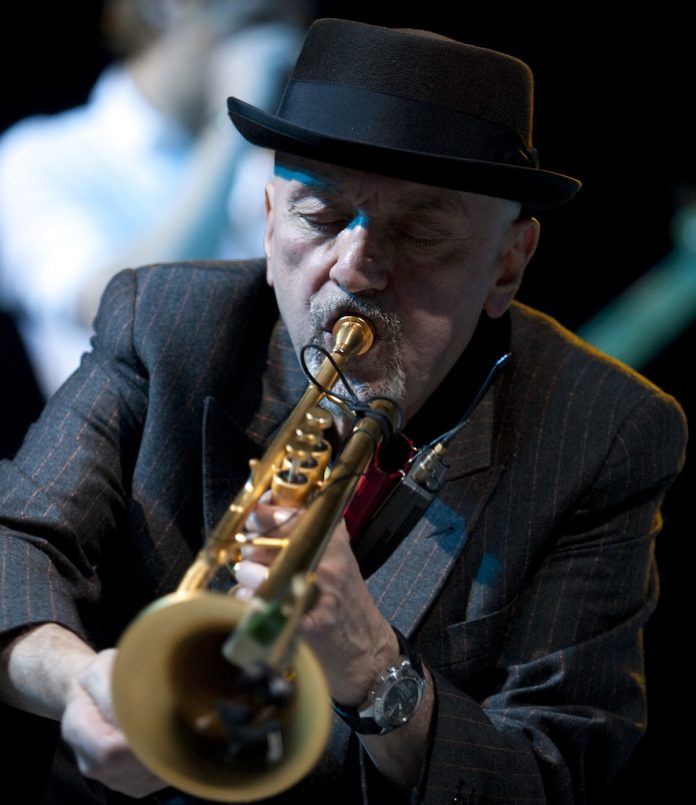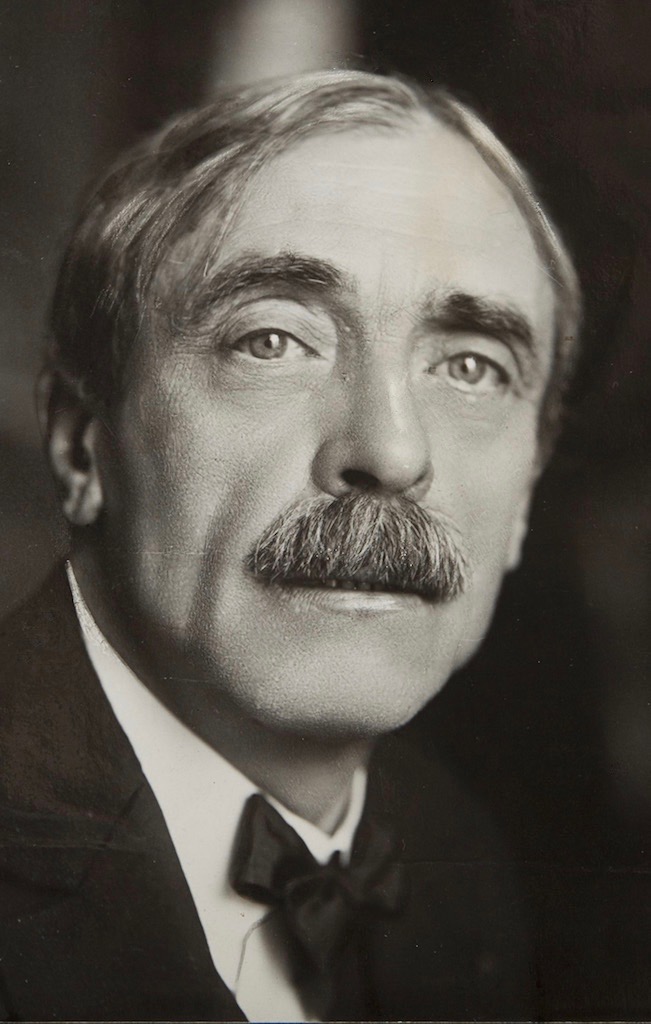
Many regions and cultural contexts have nourished the imagination of Manfred Eicher. He has long been fascinated by what one might call an “in-between” or nodal play of centres and hinterlands, a freshly configured confluence of western and eastern poetics: witness much of his work with Anouar Brahem or Eleni Karaindrou, as well as albums such as the Ghazal Trio’s The Rain (2001), The Wind (2004) by Kayhan Kalhor and Erdal Erzincan, Narrante (2105) by Golfam Khayam and Mona Matbou Riahi – and, especially, Jon Balke and Amina Alaoui’s Andalusian-inflected Siwan (2007-08) with a.o. Jon Hassell and the Siwan project’s subsequent Nahnou Houm (2017) with a.o. Mona Boutchebak, Helge Norbakken and Barokksolistene (and produced by Balke).
The modally sprung moods and extended melodies of Poland’s Krzysztof Komeda have long sat close to Eicher and it seems especially fitting that Tomasz Stanko’s Litania: Music Of Krzysztof Komeda was recorded for ECM – and that further distinctive and soulful Polish musicians such as pianist Marcin Wasilewski and saxophonist Maciej Obara record for the label today. Hear the Marcin Wasilewski Trio’s flowing and kicking Live (2016) and Maciej Obara’s freely cast ballad tribute to Stanko, Mr S, on his Three Crowns (2019). However, to extrapolate from the title of another arresting ECM album by Stanko, Soul Of Things (2001): it would be hard to gainsay the proposition that the light, the art and the poetry of the North – what the Canadian Glenn Gould called “the idea of North” in a late-1960s radio production which drew on the music of Finnish composer Jean Sibelius – have all played a special role in the development of Eicher’s sensibilities.
…it would be hard to gainsay the proposition that the light, the art and the poetry of the North … have all played a special role in the development of Eicher’s sensibilities
Paul Bley – a central artist in the ECM catalogue – suggested once that “Music is a substitute for sunlight. That’s why, the further North you go, the more intense the music becomes”. In an October 1989 interview for France’s Actuel magazine, Eicher remarked:“I love the North. There is an idea of the North which entered my life and which has never left me”. Could the profound silence, the space and the solitude implicit in such an “idea of the North” somehow find their aural equivalence in what Eicher has suggested is of signal importance to him – namely, “the luminosity of sound”?
Whatever: the two-CD Trio & Ensemble (2013-14) by Norwegian saxophonist Mette Henriette (born 1990) joins Rimur (2016) by Henriette’s compatriots, Arve Henriksen (t) and Trio Mediaeval members Anna Maria Friman (v, Hardanger fiddle), Linn Andrea Fuglseth (v, shruti box) and Berit Opheim (v) – as well as Lucus (2017) by Norwegian drummer Thomas Strønen’s genre-slipping Time Is A Blind Guide ensemble – to furnish compelling evidence of the continuing fruits of Eicher’s longstanding encouragement of a special vein of creative – and often luminous – Nordic musicality.
Think of musicians such as Bobo Stenson and Palle Mikkeborg, Karin Krog and Marilyn Mazur; Edward Vesala and Iro Haarla, Nils Petter Molvaer and Jon Balke; Ketil Bjørnstad and Mathias Eick, Frode Haltli and Trygve Seim; Sinnika Langeland and Lena Willemark, Palle Danielsson and Joakim Milder; Christian Wallumrød and Jacob Young, Tord Gustavsen and Jakob Bro; Per Jørgensen and Helge Andreas Norbakken, Nils Økland and Mats Eilertsen – to instance but some of the many stellar Nordic players who have benefited from a commitment which began in Oslo in September 1970 when Eicher produced (with, sadly, now the late recording engineer Jan Erik Kongshaug) the seminal Afric Pepperbird featuring Jan Garbarek, Terje Rypdal, Arild Andersen and Jon Christensen.
Often characterised as the Big Four of Norwegian jazz, each of these distinctive improvisers would go on to make many a further resonant contribution to contemporary music. Sample the artist-chosen tracks in their respective discs in the generously packaged Selected Recordings :rarum series issued in 2002 and 2004 and featuring comprehensive discographies as well as sleeve-notes by the musicians. One of the widest-ranging (yet tautly focused) artists on the label, Garbarek’s eventual time-dissolving collaborations with early music vocal specialists The Hilliard Ensemble – documented most recently in this year’s Remember Me, My Dear, a Swiss concert date from their 2014 farewell tour together – would attract both audiences and venues some considerable distance beyond those characteristic of customary classical, jazz or improvised music circles. The title of an equally distinctive, different yet cognate project by Terje Rypdal – Melodic Warrior (2003/2009) with The Hilliard Ensemble, the Bruckner Orchester and the Wroclaw Philharmonic Orchestra, Linz – can serve here to introduce and help contextualise some final thoughts about the import of ECM’s multi-faceted achievements.
Late in life, Sibelius (1865-1957) spoke about his disillusionment with much avant-garde composition and performance of the day. His words cut to the core of aesthetics, of poetics – and accord completely with a key belief of Manfred Eicher: that music must somehow move, must travel. “How endless a lot of well-composed music is – but nothing else than note-scribbling”, said Sibelius. “The inner life is absent. They’ve built a huge shipyard – but where is the ship?”
How might music, art, “travel” – and attain thereby the mythopoetic potency or aura one associates with the idea of, say, a night-sea crossing? Think of Oceanus and Nimbus from Ralph Towner’s Solstice – or of Sea Journey and B & G (Mid-Western Nights Dream) from Gary Burton’s Passengers (1976) featuring Eberhard Weber with Pat Metheny, Steve Swallow and Dan Gottlieb. There is a mystery here similar to that of the finest lyric poetry – a genre that has meant much to Eicher, who counts Paul Celan, Gunnar Ekelöf and Tomas Tranströmer among his elective affinities – just as Robert Bresson and Ingmar Bergman, Jean-Luc Godard and Andrei Tarkovsky have meant much to him in film, and Alberto Giacometti and Cy Twombly, Barnett Newman and Antoni Tàpies in painting and sculpture.

One recalls John Marshall’s emphasis on Eicher’s determination “always to get to the essence of things”. The greater the focused discipline in the work, the greater the impetus to the engaged or curious reader, viewer or listener to travel beyond themselves and perhaps come to sense the worlds that may lie within – and beyond – worlds. The Swedish poet and writer Gunnar Ekelöf held that in the creation of a work of art it is essential that a place be left at the table, so to speak, in order that the reader, viewer or listener find the space in which to exercise their own creativity in response. The clarity or concentration characteristic of an ECM production – where, as the classic modernist credo would have it, less can indeed mean more – has long been set in service, not just of Ekelöf’s essentially democratic conception of creativity, but also of that primal enigma alluded to by the French poet Paul Valéry in a remark much prized by Eicher. “Nothing”, said Valéry, “is as mysterious as clarity”. Such imagery – of the inner life, of travel, of clarity and mystery – takes one to the core of Eicher’s creative quest.
On an ECM recording, genres and continents alike are free to abut, shift and blend – and centuries also. Think of sessions like the aforementioned Madar, Thimar and Blue Maqams; Arvo Pärt’s key ECM New Series release Tabula Rasa (1977, ’83 and ’84 and where Keith Jarrett appears with classical violinist Gidon Kremer); Charles Lloyd’s Sangam (1994) with Zakir Hussain and Eric Harland; Jon Balke and the Siwan project’s aforementioned Nahnou Houm and – especially – the sui generis recordings by Jan Garbarek and The Hilliard Ensemble: Officium (1993), Mnemosyne (1998) and Officium Novum (2009). At ECM, a border – be it one of genre or geography, historical epoch or conceptual divide – is an open frontier, and music the magical means to cross it.
“In the 1960s”, Eicher has said, “there was still something called magic. A work of art was not a sign of something. It was the sign itself”. For half a century, this most committed, creative and poetically gifted of producers has nurtured – helped preserve, distil and develop – the potency of such signs: of those diversely energising figures conjured, for example, by Don Cherry, Dewey Redman, Charlie Haden and Ed Blackwell when they recorded the vibrant, Ornette-Coleman touched Old And New Dreams (1979) and Playing (1980) – or by the Keith Jarrett Trio with Gary Peacock and Jack DeJohnette when they cut the now reflective, now coruscating Still Live (1986) and Changeless (1987). Such signs and figures are cast in more liminal mode in further exemplary albums such as Jan Garbarek’s All Those Born With Wings (1986) and Terje Rypdal’s Lux Aeterna (2002); Tomasz Stanko’s Lontano (2005) and John Surman’s and Ivan Moody’s Rain On The Window (2006); Quercus (2006) by June Tabor, Iain Ballamy and Huw Warren, Remembrance (2009) by Ketil Bjørnstad, Tore Brunborg and Jon Christensen and Tous Des Oiseaux (2017-18) by Eleni Karaindrou (another ECM New Series issue).
In his review of The Art Ensemble Of Chicago And Associated Ensembles box-set, Brian Morton spoke memorably of music that was “soul-food” for a generation. Whether one considers (related) music from North or South America, Europe, Scandinavia or Asia, or beyond, in the end it all comes down to a matter of anima, of soul – and of indomitable spirit, creative intuition and enabling, pinpoint intelligence. Such essential qualities continue to define and distinguish ECM: witness recent releases such as Korean saxophonist Sungjae Son’s Near East Quartet (2016) and Bloom (2016) by Areni Agbabian, an American singer and pianist of Armenian heritage; Lebroba (2017) by Andrew Cyrille, Wadada Leo Smith and Bill Frisell and Contra La Indecisión (2017) by the Bobo Stenson Trio; Kit Downes’ Dreamlife Of Debris (2018), Metamodal (2018) by the Sokratis Sinopoulos Quartet and Not Far From Here (2019) by the Julia Hülsmann Quartet.
Reflecting on the ideological regression and general dumbing-down which infect much of life today – “Live the dream, as seen on the [ubiquitous] screen” – the late British pianist Dave Saul (who left the lasting legacy of his beautiful, tenderly cast Reverence on ASC Records, cut with Kenny Wheeler and Stan Sulzmann, Chris and Stuart Laurence) held ECM to be “a beacon of light in an ever-darkening world”. Long may it shine!
See part 1 of Border crossings: 50 years of ECM Records
See part 2 of Border crossings: 50 years of ECM Records
N.B. Except where noted, all dates of albums signify the date of recording, not issue.
This article is an amended and expanded version of a piece which was commissioned by Magnus Nygren of Sweden’s JAZZ ORKESTER JOURNALEN and published there in edition nr. 5, November-December 2019. It appears in Jazz Journal by kind permission of JAZZ ORKESTER JOURNALEN.















